
Quick Guide to State Paid Family Leave Programs
Triage Health's Quick Guide to State Paid Family Leave Programs provides an introduction to the Family & Medical Leave Act (FMLA), leave options at the state and local level, and the states that provide paid family leave programs.
When a family member is facing a serious medical condition, you may need to take time off work to care for them. It is important to understand your options under federal and state law, as well as your employer’s policies on taking time off work. This Quick Guide gives an overview of the state paid family leave programs that can help you balance work and personal responsibilities, when caring for a family member.
The Family and Medical Leave Act (FMLA)
The FMLA is a federal law that provides eligible employees with up to 12 weeks of job-protected leave, per year, to take time off work for their own serious medical condition, or as a caregiver of a spouse, parent, or child. Unfortunately, this leave is unpaid, and many people who qualify for leave don’t take it, because they cannot afford to. An employee may have access to other ways to get paid while on leave. For details, see the Quick Guide to How the FMLA Works with Other Benefits.
Leave Options at the State & Local Level
There are also some state and local programs that may be able to provide some income for caregivers. For example, Maine and Nevada also have paid leave laws that require employers to provide paid leave to their employees to be used for any reason. Your state might also have kin care laws, which require that if an employer provides accrued paid leave, it must allow an employee to take it for certain covered reasons. For example, if an employee has paid sick leave from the employer, then they must be allowed to use that time off to care for a family member. Details of state laws vary, but usually require that the paid leave must also be job-protected leave. States with kin care laws include CA, GA, IL, ME, MD, MA, MN, NV, NM, TX, VT, and WA.
State Paid Family Leave Programs
Your state may also have paid family leave programs. By 2024, 12 states and Washington, D.C. will have paid family leave programs in effect, which allow employees to take paid time off to care for a family member:
California
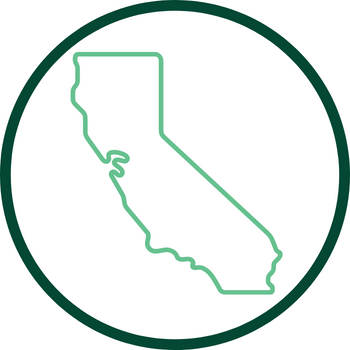 The Paid Family Leave (PFL) program began in 2004, and covers all private-sector employers as well as some public-sector employers. An employee must pay into the State Disability Insurance (SDI) program during the previous 18 months. An employee must have earned at least $300 in gross wages during the base period from which SDI deductions were taken. The program does not have a waiting period, but the employer may require that you use up to 2 weeks of vacation time or other paid time off before getting PFL benefits. The program does not provide job protection, but you may be covered by other laws that provide protection. You can receive between 60-70% of pay, depending on your income, for up to 8 weeks in a 12-month period. For details: 877-238-4373 or the California Paid Family Leave website.
The Paid Family Leave (PFL) program began in 2004, and covers all private-sector employers as well as some public-sector employers. An employee must pay into the State Disability Insurance (SDI) program during the previous 18 months. An employee must have earned at least $300 in gross wages during the base period from which SDI deductions were taken. The program does not have a waiting period, but the employer may require that you use up to 2 weeks of vacation time or other paid time off before getting PFL benefits. The program does not provide job protection, but you may be covered by other laws that provide protection. You can receive between 60-70% of pay, depending on your income, for up to 8 weeks in a 12-month period. For details: 877-238-4373 or the California Paid Family Leave website.
Colorado
 The Paid Family and Medical Leave program will begin 1/1/24. It covers employers with 1+ employees during each of 20 or more calendar workweeks during the year. It excludes federal employers, and local government employers may opt out. However, self-employed persons and local government employees may choose to pay into the program. To qualify, an employee must have earned at least $2,500 in wages during the base year or year prior. The program requires continuation of health insurance benefits, as well as reinstatement to the previous or equivalent position if employed at least 180 days before taking leave. An employee can choose to supplement leave through this program with earned, paid time off. If the employee chooses to take leave intermittently, it must be in no greater than 1-hour increments, payable once 8 hours has accumulated. You can receive up to 90% of the state average weekly wage and 50% of the portion of your wage that exceeds the state average weekly wage. Benefits last up to 12 weeks, or up to 16 weeks if the disability is pregnancy-related. For details, visit the Colorado FAMLI website.
The Paid Family and Medical Leave program will begin 1/1/24. It covers employers with 1+ employees during each of 20 or more calendar workweeks during the year. It excludes federal employers, and local government employers may opt out. However, self-employed persons and local government employees may choose to pay into the program. To qualify, an employee must have earned at least $2,500 in wages during the base year or year prior. The program requires continuation of health insurance benefits, as well as reinstatement to the previous or equivalent position if employed at least 180 days before taking leave. An employee can choose to supplement leave through this program with earned, paid time off. If the employee chooses to take leave intermittently, it must be in no greater than 1-hour increments, payable once 8 hours has accumulated. You can receive up to 90% of the state average weekly wage and 50% of the portion of your wage that exceeds the state average weekly wage. Benefits last up to 12 weeks, or up to 16 weeks if the disability is pregnancy-related. For details, visit the Colorado FAMLI website.
Connecticut
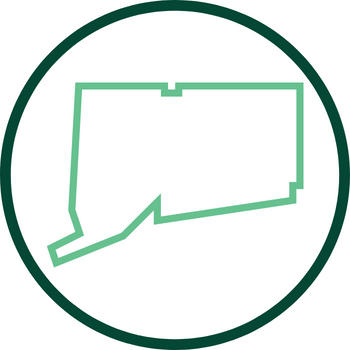 The Paid Family and Medical Leave program began 1/1/22 and covers all employers, but private plans must be approved by the state. To qualify, employees must work in the state, have earned at least $2,325 during the highest earning quarter within the base period, and be either presently employed or have been employed in the previous 12 weeks by an employer. This program does not offer job protection. You can receive 95% of your weekly wage on a sliding scale. Benefits last up to 12 weeks, or 14 weeks if the disability is pregnancy-related. For details, visit the Connecticut Department of Labor.
The Paid Family and Medical Leave program began 1/1/22 and covers all employers, but private plans must be approved by the state. To qualify, employees must work in the state, have earned at least $2,325 during the highest earning quarter within the base period, and be either presently employed or have been employed in the previous 12 weeks by an employer. This program does not offer job protection. You can receive 95% of your weekly wage on a sliding scale. Benefits last up to 12 weeks, or 14 weeks if the disability is pregnancy-related. For details, visit the Connecticut Department of Labor.
Delaware
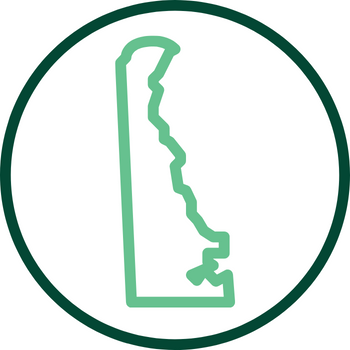 The Healthy Delaware Families Act will begin 1/1/26. Individuals who work for an employer with 10 or more employees will have access to parental leave during the first year after a child’s birth, adoption, or foster care placement. Individuals who work for an employer with 25+ employees will have access to leave to care for a family member with a serious health condition or their own serious health condition. Employees must work for their employer for one year and at least 1,250 hours in the past 12 months to be eligible. Individuals may receive up to 80% of their average weekly wage. Includes continuation of health benefits, and reinstatement to previous position, or an equivalent one, after leave. Qualified individuals will receive up to twelve weeks of leave For details, visit Healthy Delaware Families.
The Healthy Delaware Families Act will begin 1/1/26. Individuals who work for an employer with 10 or more employees will have access to parental leave during the first year after a child’s birth, adoption, or foster care placement. Individuals who work for an employer with 25+ employees will have access to leave to care for a family member with a serious health condition or their own serious health condition. Employees must work for their employer for one year and at least 1,250 hours in the past 12 months to be eligible. Individuals may receive up to 80% of their average weekly wage. Includes continuation of health benefits, and reinstatement to previous position, or an equivalent one, after leave. Qualified individuals will receive up to twelve weeks of leave For details, visit Healthy Delaware Families.
Maryland
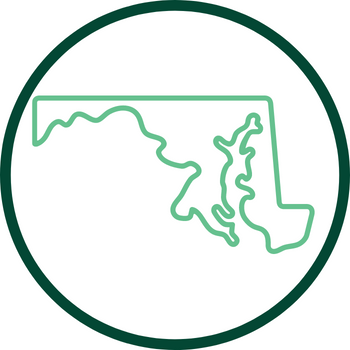 Time to Care Act provides access to Paid Family and Medical Leave beginning 1/1/26. Leave can be taken to care for a family member, or your own, serious medical condition. Individuals will be eligible if they have worked 680 hours in the past 12 months. Self-employed individuals can opt in. Individuals can receive up to 12 weeks of paid leave. Benefits will range from $100 to $1,000 per week. Beginning 10/1/23, employees and employers with 15 or more employees must start paying into the fund. For details, visit the Maryland General Assembly website.
Time to Care Act provides access to Paid Family and Medical Leave beginning 1/1/26. Leave can be taken to care for a family member, or your own, serious medical condition. Individuals will be eligible if they have worked 680 hours in the past 12 months. Self-employed individuals can opt in. Individuals can receive up to 12 weeks of paid leave. Benefits will range from $100 to $1,000 per week. Beginning 10/1/23, employees and employers with 15 or more employees must start paying into the fund. For details, visit the Maryland General Assembly website.
Massachusetts
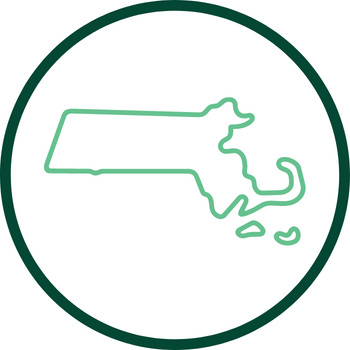 The Massachusetts Paid Family and Medical Leave program began 1/1/2021, and covers all employers. Employers may use the state plan or a state-approved private plan. Self-employed individuals may choose coverage under certain conditions. If you have earned at least $6,000 during the last 4 calendar quarters, and at least 30 times more than how much you are eligible to get each week in benefits, you qualify for benefits. You can use a calculator on the program website to see if you qualify. Employers covered by this program must provide continuation of health insurance benefits, and reinstatement to an employee’s previous or equivalent position. You can receive 80% of your income, up to 50% of the state average weekly wage, and then 50% of your wage that exceeds the state average weekly wage. Benefits last up to 12 weeks for family leave, 20 weeks for medical leave, and 26 weeks for military caregiver leave. For details: 833-344-7365 or the Massachusetts Department of Family and Medical Leave.
The Massachusetts Paid Family and Medical Leave program began 1/1/2021, and covers all employers. Employers may use the state plan or a state-approved private plan. Self-employed individuals may choose coverage under certain conditions. If you have earned at least $6,000 during the last 4 calendar quarters, and at least 30 times more than how much you are eligible to get each week in benefits, you qualify for benefits. You can use a calculator on the program website to see if you qualify. Employers covered by this program must provide continuation of health insurance benefits, and reinstatement to an employee’s previous or equivalent position. You can receive 80% of your income, up to 50% of the state average weekly wage, and then 50% of your wage that exceeds the state average weekly wage. Benefits last up to 12 weeks for family leave, 20 weeks for medical leave, and 26 weeks for military caregiver leave. For details: 833-344-7365 or the Massachusetts Department of Family and Medical Leave.
New Hampshire
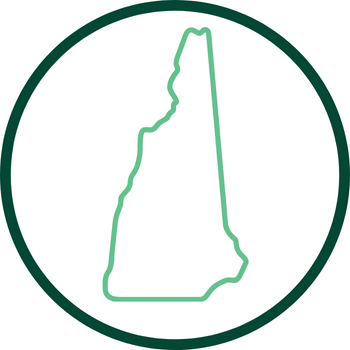 The New Hampshire Granite State Family Leave Plan will begin 1/1/23. This plan covers state employers. However, private employers may opt-in. Even if they don’t, if the employer has more than 50 employees, employees may still opt-in. If employers do opt-in, they receive a tax credit of 50% of the premium paid, and employees receive job protection. You can receive 60% of your wages for up to 6 weeks of leave in a 12-month period. The program has a 7-month waiting period, a one-week elimination period, and a 60-day annual open enrollment period. For details, see this SHRM article about paid leave in New Hampshire.
The New Hampshire Granite State Family Leave Plan will begin 1/1/23. This plan covers state employers. However, private employers may opt-in. Even if they don’t, if the employer has more than 50 employees, employees may still opt-in. If employers do opt-in, they receive a tax credit of 50% of the premium paid, and employees receive job protection. You can receive 60% of your wages for up to 6 weeks of leave in a 12-month period. The program has a 7-month waiting period, a one-week elimination period, and a 60-day annual open enrollment period. For details, see this SHRM article about paid leave in New Hampshire.
New Jersey
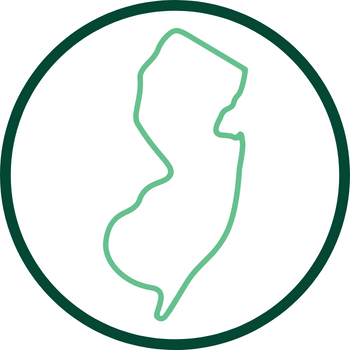 The New Jersey Family Leave Insurance program began in 2009, and covers all employers. Employers can use the state plan or a state-approved private plan. To qualify in 2024, an employee must have either (1) worked 20 calendar weeks in New Jersey in the base year, earning $283 or more each week; or (2) earned $14,200 or more in the last year prior to the start of family leave. There is no waiting period. An employee may choose to (but an employer cannot require them to) use vacation/paid time off at 100% of pay instead of receiving benefits through this program. This program provides job protection. You can receive from 85% of your average weekly wage up to the maximum amount. Benefits last up to 12 weeks (56 days) or until the benefits equal one-third of your total wages during the year, whichever is less. For details, visit the New Jersey Family Leave Insurance website.
The New Jersey Family Leave Insurance program began in 2009, and covers all employers. Employers can use the state plan or a state-approved private plan. To qualify in 2024, an employee must have either (1) worked 20 calendar weeks in New Jersey in the base year, earning $283 or more each week; or (2) earned $14,200 or more in the last year prior to the start of family leave. There is no waiting period. An employee may choose to (but an employer cannot require them to) use vacation/paid time off at 100% of pay instead of receiving benefits through this program. This program provides job protection. You can receive from 85% of your average weekly wage up to the maximum amount. Benefits last up to 12 weeks (56 days) or until the benefits equal one-third of your total wages during the year, whichever is less. For details, visit the New Jersey Family Leave Insurance website.
New York
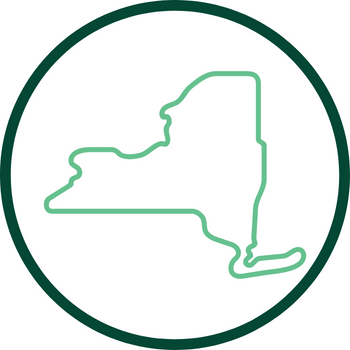 The New York Paid Family Leave (PFL) program began in 2018 and covers most employers. To qualify, an employee must be scheduled for at least 20 hours per week for 26 consecutive weeks, or if scheduled for less than 20 average hours per week, must show 175 days worked. This program has no waiting period. It does provide job protection. An employee can receive 67% of their average weekly wage or New York State average weekly wage, whichever is less. Benefits last for 12 weeks in a 12-month period. For details: 844-337-6303 or visit the Paid Family Leave for Family Care website.
The New York Paid Family Leave (PFL) program began in 2018 and covers most employers. To qualify, an employee must be scheduled for at least 20 hours per week for 26 consecutive weeks, or if scheduled for less than 20 average hours per week, must show 175 days worked. This program has no waiting period. It does provide job protection. An employee can receive 67% of their average weekly wage or New York State average weekly wage, whichever is less. Benefits last for 12 weeks in a 12-month period. For details: 844-337-6303 or visit the Paid Family Leave for Family Care website.
Oregon
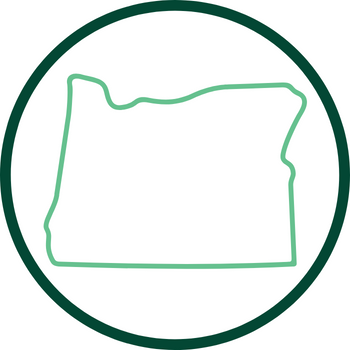 The Oregon Paid Family and Medical Leave (PFML) program will begin 9/3/23, and covers any employer with one or more employees working in the state (excludes federal government employers). Tribal governments and self-employed workers may opt-in. To qualify, an employee must have contributed to the PFML Insurance Fund during the base year (4 of the last 5 quarters worked) and have earned at least $1,000 in wages during the base year or the prior year. This program requires the continuation of the employee’s health insurance benefits and reinstatement to their previous or equivalent position, if employed at least 90 days before taking leave. The employee can choose to supplement this program with earned paid time off. You can receive up to100% of your average weekly wage on a sliding scale, and benefits last up to 12 weeks in a 12-month period, or 14 weeks if the disability is pregnancy-related. For details, visit the Paid Leave Oregon website.
The Oregon Paid Family and Medical Leave (PFML) program will begin 9/3/23, and covers any employer with one or more employees working in the state (excludes federal government employers). Tribal governments and self-employed workers may opt-in. To qualify, an employee must have contributed to the PFML Insurance Fund during the base year (4 of the last 5 quarters worked) and have earned at least $1,000 in wages during the base year or the prior year. This program requires the continuation of the employee’s health insurance benefits and reinstatement to their previous or equivalent position, if employed at least 90 days before taking leave. The employee can choose to supplement this program with earned paid time off. You can receive up to100% of your average weekly wage on a sliding scale, and benefits last up to 12 weeks in a 12-month period, or 14 weeks if the disability is pregnancy-related. For details, visit the Paid Leave Oregon website.
Rhode Island
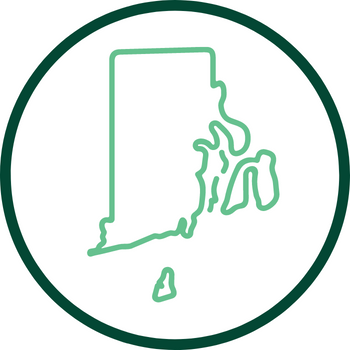 Rhode Island Temporary Caregiver Insurance (TCI) began in 2014, and covers all private employees and some public employees. To qualify, the employee (1) must have been paid wages in Rhode Island and have paid into the TCI fund; and (2) must have been paid at least $16,800 in the base period or earned at least $2,800 in one quarter with total taxable wages at least 1.5x of the highest quarter of earnings and base period taxable wages equal to at least $5,600. This program requires maintenance of health benefits while on leave and provides job protection. Leave must last for 7 or more consecutive days to be eligible for benefits. You can receive 4.62% of wages paid in the highest base period quarter, and benefits last up to 5 weeks (2022), or 6 weeks (2023). For details, go to the Rhode Island Department of Labor and Training website.
Rhode Island Temporary Caregiver Insurance (TCI) began in 2014, and covers all private employees and some public employees. To qualify, the employee (1) must have been paid wages in Rhode Island and have paid into the TCI fund; and (2) must have been paid at least $16,800 in the base period or earned at least $2,800 in one quarter with total taxable wages at least 1.5x of the highest quarter of earnings and base period taxable wages equal to at least $5,600. This program requires maintenance of health benefits while on leave and provides job protection. Leave must last for 7 or more consecutive days to be eligible for benefits. You can receive 4.62% of wages paid in the highest base period quarter, and benefits last up to 5 weeks (2022), or 6 weeks (2023). For details, go to the Rhode Island Department of Labor and Training website.
Washington
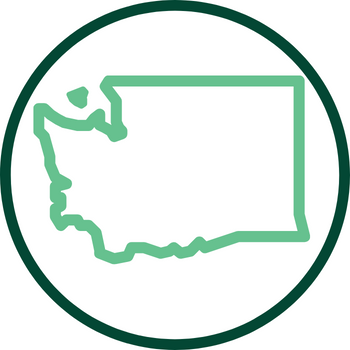 The Washington Paid Family Medical Leave program began in 2020, and covers all employers. Self-employed workers may opt-in. To qualify for the state plan, an employee must have been employed for at least 820 hours in the qualifying period. To qualify for the voluntary plan, an employee must have worked 340 hours in the last 12 months. There is a one-week waiting period, except for bonding and qualifying exigency leaves. The state plan provides job protection and health insurance protection for employees who have worked at least 12 months, and worked 1,250 hours in the 12 months immediately preceding leave, and work for an employer who has 50+ employees. The voluntary plan provides job protection for employees who have worked at least 9 months and worked 965 hours in the 12 months preceding leave. Under the voluntary plan, employers must maintain health benefits for employees. You can receive up to 90% of your average weekly wage up to the state average weekly wage, and then 50% of your average weekly wage exceeding that. Benefits last for up to 12 weeks for medical or family leave and up to 16 weeks of combined family and medical leave if you have more than one qualifying event in the same claim year. For details: 833-717-2273 or visit the Washington Paid Family & Medical Leave website.
The Washington Paid Family Medical Leave program began in 2020, and covers all employers. Self-employed workers may opt-in. To qualify for the state plan, an employee must have been employed for at least 820 hours in the qualifying period. To qualify for the voluntary plan, an employee must have worked 340 hours in the last 12 months. There is a one-week waiting period, except for bonding and qualifying exigency leaves. The state plan provides job protection and health insurance protection for employees who have worked at least 12 months, and worked 1,250 hours in the 12 months immediately preceding leave, and work for an employer who has 50+ employees. The voluntary plan provides job protection for employees who have worked at least 9 months and worked 965 hours in the 12 months preceding leave. Under the voluntary plan, employers must maintain health benefits for employees. You can receive up to 90% of your average weekly wage up to the state average weekly wage, and then 50% of your average weekly wage exceeding that. Benefits last for up to 12 weeks for medical or family leave and up to 16 weeks of combined family and medical leave if you have more than one qualifying event in the same claim year. For details: 833-717-2273 or visit the Washington Paid Family & Medical Leave website.
Washington, D.C.
 The Washington D.C. Universal Paid Leave program began in 2020, and covers all private employers, unless they are exempt from D.C. taxes by federal law or treaty. A self-employed individual may opt-in. To qualify, an employee must work more than 50% of the time in D.C. in the 52 calendar weeks immediately preceding leave or regularly spend a substantial amount of time working in D.C. without spending more than 50% of their work time in another jurisdiction. There is a 1-week waiting period for this program. This program does not provide job protection. You can receive up to 90% of your average weekly wage up to 150% of DC’s minimum wage, and then 50% of your average weekly wage that exceeds 150% of DC’s minimum wage. Benefits last up to 6 weeks for family caregiver leave, up to 6 weeks for medical leave, and up to 8 weeks for parental leave. For details: 202-724-7000 or visit the D.C. Paid Family Leave website.
The Washington D.C. Universal Paid Leave program began in 2020, and covers all private employers, unless they are exempt from D.C. taxes by federal law or treaty. A self-employed individual may opt-in. To qualify, an employee must work more than 50% of the time in D.C. in the 52 calendar weeks immediately preceding leave or regularly spend a substantial amount of time working in D.C. without spending more than 50% of their work time in another jurisdiction. There is a 1-week waiting period for this program. This program does not provide job protection. You can receive up to 90% of your average weekly wage up to 150% of DC’s minimum wage, and then 50% of your average weekly wage that exceeds 150% of DC’s minimum wage. Benefits last up to 6 weeks for family caregiver leave, up to 6 weeks for medical leave, and up to 8 weeks for parental leave. For details: 202-724-7000 or visit the D.C. Paid Family Leave website.
The various paid family leave options depend on where you live. There may be other options at the local level. See Triage Cancer's Chart of State Laws related to Taking Time Off, for details.
It is important to learn about all of your options offered at the federal and state level, as well as understand your employee benefits, to ensure you are making the best decision based on your needs.
Learn More
For more information about benefits for caregivers, visit Triage Health's Caregiving Materials & Resources.
Watch this short animated video on caregiving that describes legal protections that may be available: Triage Cancer Explains: Supporting Caregivers.
Sharing Our Quick Guides
We're glad you found this resource helpful! Please feel free to share this resource with your communities or to post a link on your organization's website. If you are a health care professional, we provide free, bulk copies of many of our resources. To make a request, visit TriageHealth.org/MaterialRequest.
However, this content may not be reproduced, in whole or in part, without the express permission of Triage Cancer. Please email us at TriageHealth@TriageCancer.org to request permission.
Last reviewed for updates: 01/2022
Disclaimer: This handout is intended to provide general information on the topics presented. It is provided with the understanding that Triage Cancer is not engaged in rendering any legal, medical, or professional services by its publication or distribution. Although this content was reviewed by a professional, it should not be used as a substitute for professional services. © Triage Cancer 2023
